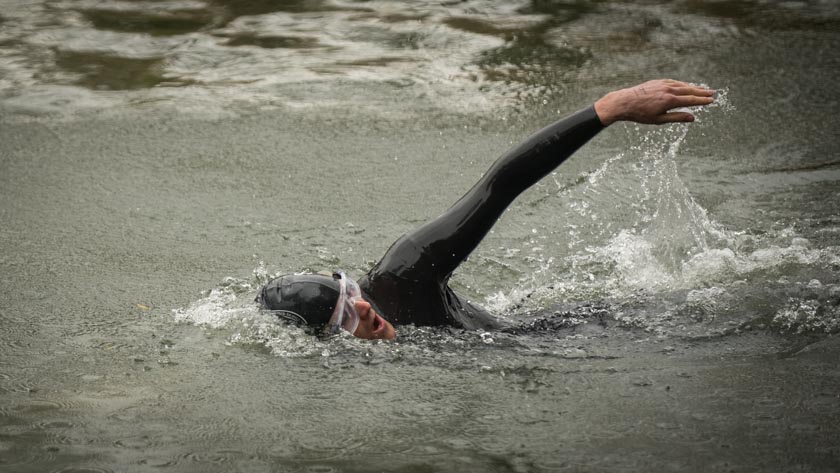Conquering Open Water Fears
Do you get nervous about panic attacks when swimming in open water? Worried there's a large beast somewhere down below, waiting to gobble you down? For experienced and novice swimmers alike, swimming in open water can pose some significant challenges – the need to sight (periodically check where you’re going), choppiness, weeds, ducks and more, to name but a few. All of these – and other effects – can lead to a swimmer’s main fear: that of an open water panic attack, or ‘open water freakout’ as it is known by members of Team Walrus. This is the feeling of complete panic that can wash over you suddenly at any point in an open water swim, during which your heart rate rises, your breathing goes out of control, your limbs cease functioning and the brain starts to panic. But fear not!
The advice that follows is borne from experience. Picture the scene: a novice but eager triathlete, having spent months training in a pool, diving into a lake in the New Forest in March, wearing his brand new wetsuit. The first few strokes – exhilaration! Out to the first buoy… made it. Turn back to shore… and BAM! It struck. With no knowledge of what was going on other than a near certainty of imminent death down with the fish and shopping trolleys, there was nothing for it but to roll over onto my back, stick my fist in the air, and wait for a canoe. Those who have experienced it will know the cause: an open-water panic attack, or 'freakout'.
Often, following an initial panic that strikes out of the blue – or tales of freakouts from other swimmers – it is the fear of a panic attack itself that then induces subsequent occurrences. I’m panicking as I write this.
The freakout is to be loved and not feared – a sign that somewhere in the back of your mind, some primitive mechanism has kicked in to tell you that what you are doing is madness
BUT all is not lost! The freakout, if its causes and effects are properly understood, can be controlled and avoided. Indeed, it is to be loved – a sign that somewhere in the back of your mind, some primitive mechanism has kicked in to tell you that what you are doing is madness – and not feared. This article aims to help those swimmers and triathletes – novice and experienced alike – to conquer their fears through knowledge and employment of some practical techniques.

Thoughts like this may lead to an open water panic. Try and erase them from your mind.
Causes
The first step towards conquering the open water panic attack is understanding its causes. That way, effective methods can be used to beat it. The major ones have been identified as follows, in order of their impact:1) Cold Water.
The cold of open water can be intense, raising your heart rate and your breathing rate (though your breathing becomes shallow). If you're not used to it and not expecting it, this can be a real shock.2) Wetsuit.
For those used to training in a pool without a wetsuit, to suddenly have a wetsuit on in water can be strange, giving the feeling of constriction – particularly around the neck and shoulders.3) Lack of Vision.
In a pool, you can clearly see the bottom and all marker lines. In open water, the water is often murky and you can barely see a few centimetres ahead of you, which can be scary if you’re unused to it. A further effect of this is that you will have to ‘sight’ (look up and out of the water) to maintain direction.4) No Bottom.
Even if you never have to stand on the bottom in a pool, the fact of it being there (and being able to see it) gives a feeling of confidence and safety. This sense is taken away in open water: not only is there often no bottom to stand on, even if there is you may not be able to see it.5) No End to Push Off.
Again, it may seem like a small point, but if you’re used to swimming in a pool you’re probably used to having an end to push off every few strokes, giving you a nice boost. Having this small rest taken away from you can make progress seem slow, increasing the sense of urgency and potentially leading to a panic.6) Weed/Fish/Objects.
To find yourself brushing against weed, sticks, fish and other objects can be startling if you’re unused to it (and if you can’t see what it is you’re brushing against – who’s to say there isn’t a large undiscovered creature living in this lake…).Preventing the Freakout
So, what can you do to combat these points and prevent the potential terror of a freakout? Below are a few tips for a freakout-less swim.
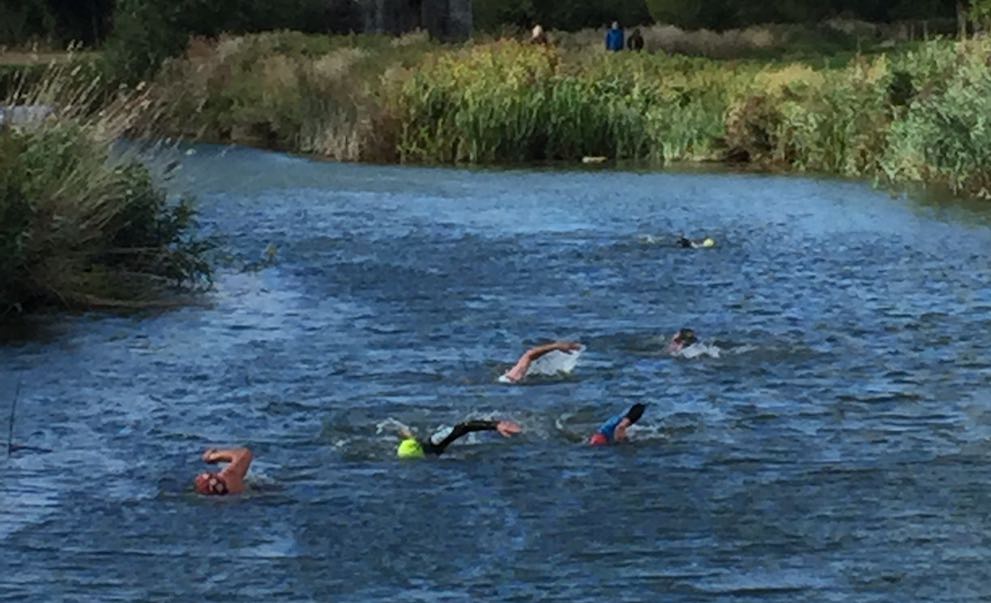
1) Make sure you are dressed warmly enough for the water!
For inexperienced swimmers, wear a wetsuit for swimming in UK waters at any time of year, plus a swim cap. In cold water, think about doubling up on swim caps, wearing a full face warmer, and covering the feet and hands. Shock due to cold is the prime cause of the freakout as it accelerates your heart and breathing, so if you can control this then you’re most of the way there.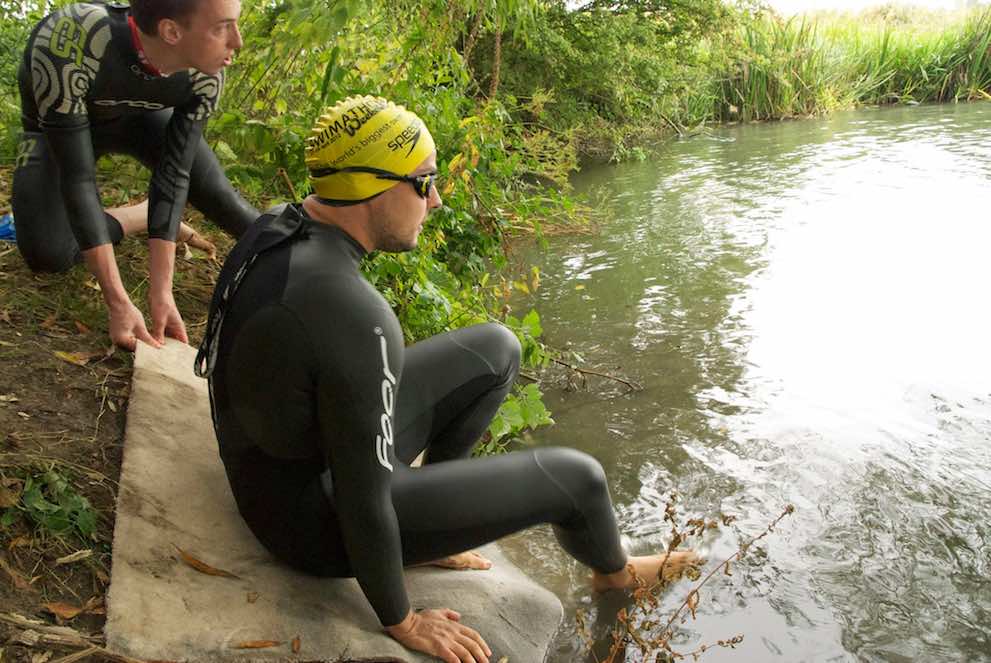
2) Get into the water and acclimatise before setting off.
Possibly the most important piece of advice. You're guaranteed to feel the effects of cold water, so the best thing to do is get in and get over them before the race starts. This means getting your head under and practising breathing a few times until you are used to it. You’re good to go when you can do nice, long, slow breaths out underwater. Open up the neck of your wetsuit to enable water to flow all around your limbs and loosen everything up. Try and get into the water 3-4 minutes before the start (too soon and you will get cold!) to do this.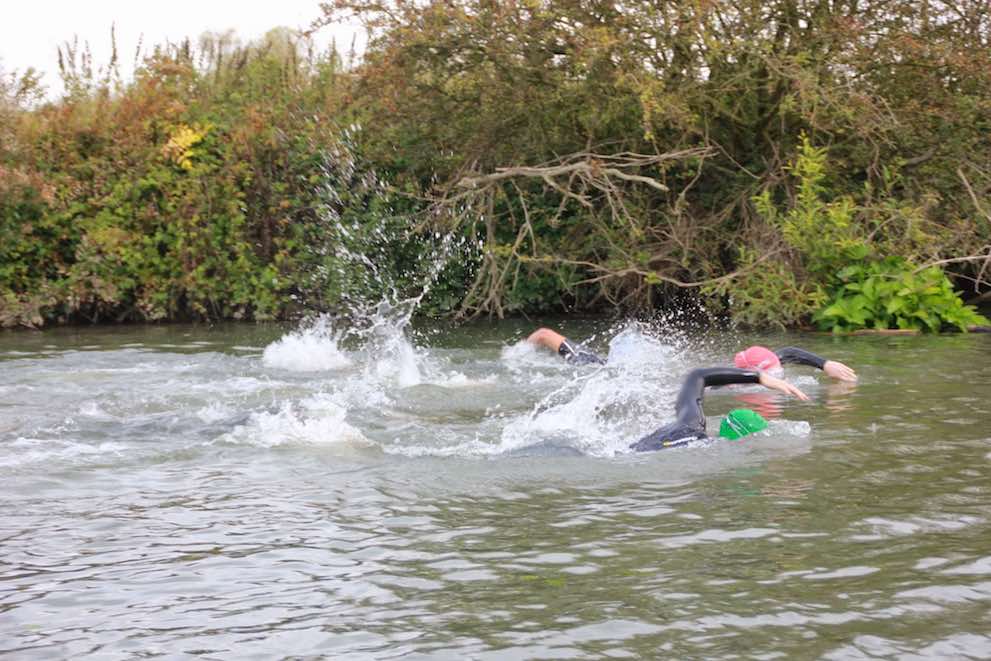
3) Urinate!
It helps warmth spread through the wetsuit and will leave you feeling light for the rest of the race.
4) Set off slowly and build up to it.
The freakout often occurs between 30 seconds – 1 minute after the start when swimmers have set off too quickly. Set off at a smooth, easy pace and build up to a quicker pace if you are nervous. If when you build up pace you start to feel a sense of rising panic, then slow down slightly and it will likely ease off. Sticking close to the safety boats and having the knowledge that someone is nearby can be a big help, too.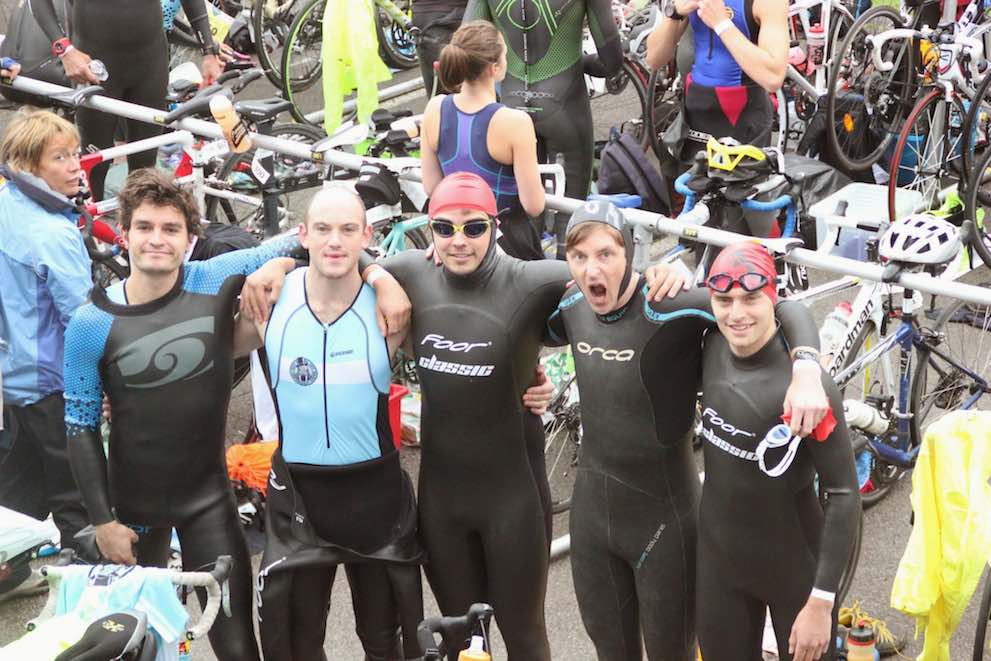
5) Get the right kit.
Being unable to see underwater means that sighting out of it is important, so get a good pair of goggles suited to open water. If you’re on a budget and just want one pair for the pool and open water, have a look at the Aquasphere Kayenne range. You also want a good pair of goggles so they don’t leak! Also think about a swim cap that covers the ears and neck too.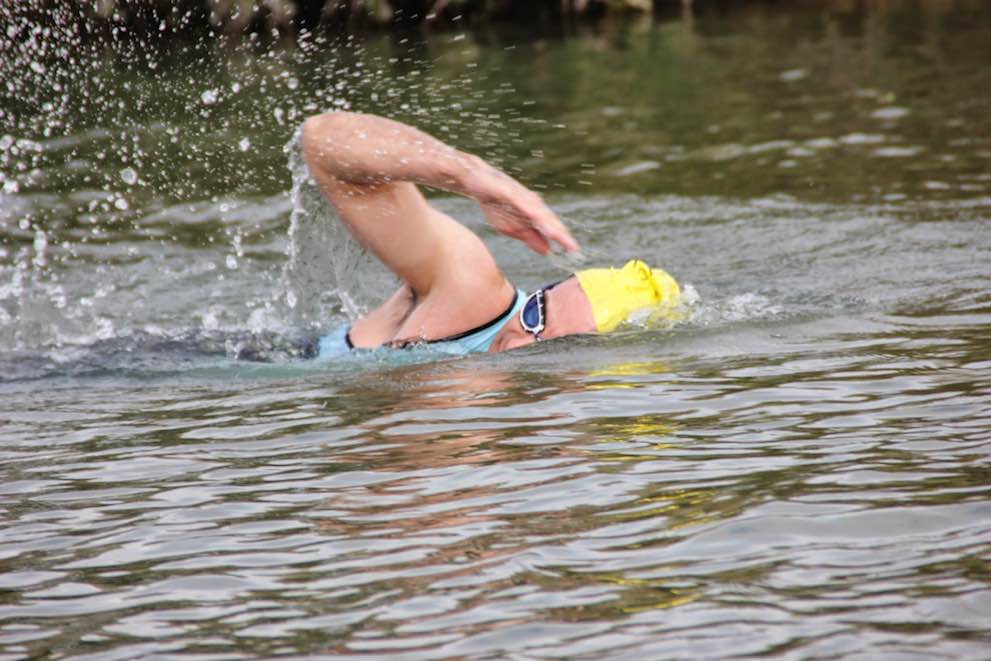
6) Train progressively in open water.
The only way to get used to weeds/murk/lack of sight is to practise in it, building up slowly in terms of the distances you cover. Panics arise when the brain starts yelling ‘you can’t do this’, so by training up to the distances you need to cover in events, you will build confidence in your ability to combat this.